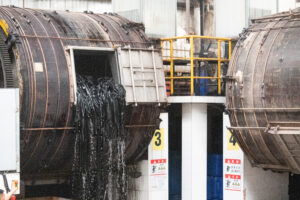The Environmental Applications of Vegetable-Tanned Leather and Factory Storage Practices
Introduction
Vegetable-tanned leather, revered for its eco-friendly credentials and timeless appeal, is gaining momentum in the sustainable fashion movement. This article delves into the environmental applications of vegetable-tanned leather and provides a comprehensive guide on how factories can optimally store this sustainable material to maintain its quality and integrity.
The Eco-Advantages of Vegetable-Tanned Leather
Vegetable-tanned leather, or veg-tan, is crafted using natural tannins derived from plants like tree bark, leaves, and fruits. This traditional method is not only a testament to heritage and craftsmanship but also a more eco-friendly choice compared to other methods that utilize harsh chemicals.
1. Reduction in Pollution: Vegetable tannins can replace toxic minerals and synthetic tanning chemicals, minimizing environmental concerns. Unlike chrome tanning, which contributes to water pollution, vegetable tanning has a lesser degree of environmental impact without bioaccumulation.
2. Biodegradability: Veg-tan leather is more biodegradable than chrome-tanned leather due to its sugary compounds, which are more susceptible to microbial attack. This inherent biodegradability aligns with the principles of a circular economy, emphasizing the reuse and sustainable consumption of materials.
3. Resource Conservation: The use of vegetable tannins as tanning agents aids in the growing environmentally friendly use of renewable resources. This approach promotes resource conservation and reduces the reliance on non-renewable resources.
Factory Storage Practices for Vegetable-Tanned Leather

Proper storage is pivotal to preserving the quality of vegetable-tanned leather and ensuring its longevity. Here are the best practices for storing this sustainable material in a factory setting:
1. Controlled Environment: Maintain a storage environment with a temperature below 50°C and a relative humidity of 50-60% to prevent damage from temperature and humidity fluctuations.
2. Protection from Light: Direct sunlight can cause discoloration and degradation. Store the leather away from windows and direct light sources to preserve its color and quality.
3. Flat or Roll Storage: Store larger pieces flat with paper separators to prevent creasing, while smaller pieces can be rolled tightly in cylindrical tubes to save space and maintain integrity.
4. Dust and Debris Protection: Use protective materials like cheesecloth or muslin to wrap the leather and prevent dust accumulation, which can scratch and soil the leather.
5. Mold and Mildew Prevention: Ensure well-ventilated storage areas and consider using dehumidifiers to prevent mold growth, which can damage the leather.
6. Organization and Accessibility: Organize the leather by type, color, and thickness for easy retrieval. Labeling each stack or roll will streamline the process when specific pieces are needed.
7. Regular Inspection and Rotation: Conduct regular inspections for signs of damage and rotate the stock to ensure even distribution of environmental effects, such as humidity and temperature changes.

Conclusion
Vegetable-tanned leather stands out as a sustainable choice in the leather industry due to its eco-friendly production process and biodegradability. Factories that store this material must adhere to strict environmental controls and storage practices to maintain its quality and contribute to the sustainability goals of their operations. By following these guidelines, factories can ensure that their vegetable-tanned leather remains in prime condition, ready for the creation of beautiful, long-lasting, and eco-conscious products.



